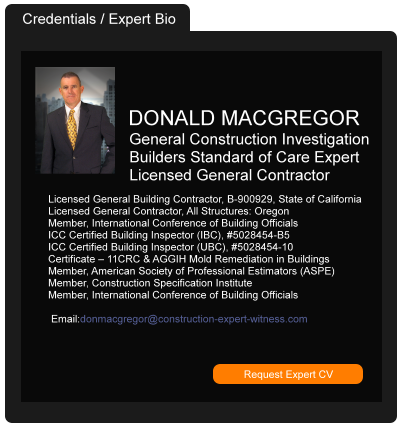What Does It Mean When a House Sells for $50 Million?
September 10, 2014 —
Jonathan J. Miller – BloombergOne of the byproducts of the global financial crisis has been the creation of a new class of housing and buyers. Some of the strongest evidence is the rise in the number of residences sold for more than $50 million.
A buyer recently paid a record $71.3 million for a Manhattan co-op, breaking the $70 million record set only a few months earlier. These sales seem modest compared with a $147 million sale in East Hampton, New York, and a $120 million sale in Greenwich, Connecticut, the two highest U.S. residential transactions in 2014. There have been six sales of more than $100 million in the past four years, with more likely to come.
Wealthy investors have benefited from rising stock markets, while preserving capital by acquiring assets such as U.S. residential real estate. However, the high-end market isn't a proxy for the health of the broader U.S. housing market. Unlike the buyers in the market's upper strata, who often are foreign and all-cash purchasers, the majority of U.S. homebuyers remain dependent on access to credit. And today's tight lending conditions aren’t expected to ease anytime soon. According to the Federal Reserve, only a small number of banks have recently eased mortgage standards.
Read the court decisionRead the full story...Reprinted courtesy of
Jonathan J. Miller, BloombergMr. Miller may be contacted at
jmiller@millersamuel.com
Recovering For Inflation On Federal Contracts: Recent DOD Guidance On Economic Price Adjustment Clauses
October 24, 2022 —
Amanda L. Marutzky - ConsensusDocsSince October 2020, inflation in the United States has seen its fastest increase in more than 30 years. In the last year alone, inflation has remained as high as 8.6%. This hike has impacted everything from diesel to steel. In the construction industry, the higher prices of goods and services directly affect how contractors draft their construction contracts.
The Department of Defense (DoD) has taken note of this dramatic price increase and recently issued guidance to its commanding officers and the procurement community. On May 5, 2022, DoD issued a memorandum titled “Guidance on Inflation and Economic Price Adjustments.” The stated purpose of the memo is “to assist COs to understand whether it is appropriate to recognize cost increases due to inflation under existing contracts as well as offer considerations for the proper use of EPA when entering into new contracts.” DoD’s memo responds to contractor and contracting officer concerns about the sudden and unexpected cost increases in labor and materials.
Economic Price Adjustments, or EPAs, are adjustments to a stated contract price upon the occurrence of certain contingencies. FAR 16.203-1. They are of three general types – (1) adjustments based on established prices, (2) adjustments based on actual costs of labor or material, or (3) adjustments based on cost indexes of labor or material. Id. Because EPAs allow for adjustments in a contract price, EPA clauses allow a contractor to recover unanticipated increases in its project costs. For example, FAR 52.216-4, Economic Price Adjustment-Labor and Material, authorizes a contractor to recover for increases in the cost of material or labor. Such recovery is available when costs increase more than 3%, with a maximum recovery of 10% of the original contract price. See also FAR 52.216-2 through FAR 52.216-4. These EPA clauses provide contractors with relief and protection from issues such as dramatic inflation. EPA clauses, however, are not included in all contracts.
Read the court decisionRead the full story...Reprinted courtesy of
Amanda L. Marutzky, Watt, Tieder, Hoffar, & Fitzgerald, LLP (ConsensusDocs)Ms. Marutzky may be contacted at
amarutzky@watttieder.com
Hong Kong Property Tycoon Makes $533 Million Bet on Solar
April 02, 2014 —
Ehren Goossens and Benjamin Haas - Bloomberg NewsA Hong Kong real-estate tycoon has spent the past year accumulating stakes in failing solar companies, piecing together what may become the biggest collection of photovoltaic factories in the world.
Zheng Jianming, also known in Cantonese as Cheng Kin Ming, has spent or pledged about $533 million to buy assets that at their peak were worth almost $20 billion, according to regulatory filings in the U.S. and Hong Kong, where he has a home and office.
The transactions, if completed, would transform Zheng, a newcomer to the solar industry, into one of its most powerful leaders. Another Zheng solar investment in 2012, a 30 percent stake in Shunfeng Photovoltaic International Ltd. (1165), has surged more than 2,900 percent and is now worth more than $745 million.
Mr. Goossens may be contacted at egoossens1@bloomberg.net; Mr. Haas may be contacted at bhaas7@bloomberg.net
Read the court decisionRead the full story...Reprinted courtesy of
Ehren Goossens and Benjamin Haas, Bloomberg News
What Construction Contractors Should Know About the California Government Claims Act
May 28, 2024 —
Garret Murai - California Construction Law BlogIf you work on state or local public works projects in California you should have at least a basic understanding of the Government Claims Act formerly known as the Tort Claims Act (Govt. Code §§ 900 et seq.). In the event of a dispute with a public entity, the Government Claims Act will usually apply, absent contractual provisions providing otherwise (Govt. Code §§930, 930.2) (e.g., in a construction contract), and requires that a “claim” first be presented to a “public entity” before a claimant files a lawsuit against the public entity. Failure to comply with the Government Claims Act can serve as a bar to maintaining a lawsuit against a public entity.
What types of claims does the Government Claims Act apply to?
The Government Claims Act broadly applies to most claims against state and local public entities. This is not limited to construction projects and includes all claims for “money or damage” arising from death, personal injury, breach of contract, and damage to real and personal property, wrongful death, or breach of contract.
Read the court decisionRead the full story...Reprinted courtesy of
Garret Murai, Nomos LLPMr. Murai may be contacted at
gmurai@nomosllp.com
Challenging and Defending a California Public Works Stop Payment Notice: Affidavit vs. Counter-Affidavit Process
October 21, 2019 —
William L. Porter - Porter Law GroupOne of the most effective collection procedures available to subcontractors and suppliers to California Construction projects is the “stop payment notice” procedure found under California Civil Code sections 9350 – 9364. Under this procedure, the unpaid subcontractor or supplier may serve the stop payment notice on the public entity and the direct or “prime” contractor and cause the public entity to withhold from the direct contractor 125% of the funds identified in the stop payment notice. Thereafter, funds will not generally be released unless the parties reach a settlement agreement or the issue is decided through litigation, arbitration or mediation. There is however an alternative procedure available to direct contractors to expedite the determination of whether a stop payment notice is valid and to possibly obtain an early release of the funds withheld by the public entity. This “summary proceeding” process could result in release of funds to the direct contractor in less than 30 days. The summary proceeding can also be challenged by the unpaid subcontractor or supplier. All public works contractors, subcontractors and suppliers should be aware of the process. The process for direct contractors to release a stop payment notice and for subcontractors and suppliers to challenge the process works as follows:
After a California stop payment notice has been served and the public entity has withheld funds accordingly, the direct contractor may challenge the stop payment notice by serving an “affidavit” (basically a sworn statement showing why the stop notice is not valid) on the public entity, demanding that the public entity release all funds withheld. Upon receipt of such an affidavit, the public entity will serve the subcontractor or supplier who served the stop payment notice with a copy of the affidavit, along with a “demand for release of funds”. If the stop payment notice claimant does not respond with a “counter-affidavit” by the date stated on the notice sent by the public entity (“not less than 10 days nor more than 20 days after service on the claimant of a copy of the affidavit”), then the public entity will be within its rights to release the withheld funds to the direct contractor, and the stop payment notice claimant will relinquish its stop payment notice rights.
Read the court decisionRead the full story...Reprinted courtesy of
William L. Porter, Porter Law GroupMr. Porter may be contacted at
bporter@porterlaw.com
A Duty to Design and Maintain Reasonably Safe Roadways Extends to All Persons. (WA)
February 25, 2014 —
Natasha Khachatourians – Scheer & Zehnder LLP Liability NewsletterCase: Lowman v. Wilbur, et al., 178 Wn.2d 165, 309 P.3d 3.87 (2013).
Issue: If a passenger’s injuries are in fact caused by the placement of a utility pole too close to a roadway, can the injuries be deemed too remote for purposes of legal causation? NO.
Facts: Plaintiff was a passenger in a vehicle that lost control and collided with a utility pole that was 4.47 feet from the edge of the roadway. The vehicle’s driver was under the influence of alcohol. Plaintiff sued the driver as well as the utility company and Skagit County for negligence. The trial court granted the utility company and Skagit County’s summary judgment motion, finding that the negligent placement of the utility pole was not a legal cause of plaintiff’s injuries.
The issue before the Supreme Court was whether a negligently placed utility pole could be the legal cause of a resulting injury.
Read the court decisionRead the full story...Reprinted courtesy of
Natasha Khachatourians, Scheer & Zehnder LLP Ms. Khachatourians may be contacted at
natashak@scheerlaw.com
Employees in Construction Industry Entitled to Compensation for Time Spent Complying with Employer-Mandated Security Protocols
August 19, 2024 —
Garret Murai - California Construction Law BlogWage and hour laws dictating how employers must compensate their employees for time worked can, given the innumerable ways that employees perform their jobs, raise a number of questions. The next case, Huerta v. CSI Electrical Contractors, 15 Cal.5th 908 (2024) – which I won’t spend a lot of time discussing since I think it applies in somewhat limited situations – addresses whether employees are entitled to be paid while waiting to enter and exit worksites and for meal periods when they are not allowed to exit a worksite.
The Huerta Case
The 9th Circuit Court of Appeals requested that the California Supreme Court address three questions related to whether employees should be compensated under California wage and hour laws for time spent waiting to enter and exit worksites and for meal periods when they are not allowed to exit a worksite:
- Whether employees should be paid for time spent waiting in a personal vehicle to be scanned in and out of a worksite;
- Whether employees should be paid for time spent traveling in a personal vehicle from a security gate to employee parking lots; and
- Whether employees should be paid during meal periods if they are not permitted to leave a worksite.
Read the court decisionRead the full story...Reprinted courtesy of
Garret Murai, Nomos LLPMr. Murai may be contacted at
gmurai@nomosllp.com
Orange County Home Builder Dead at 93
April 25, 2012 —
CDJ STAFFRandall E. Presley was a homebuilder in Southern California for more than thirty years, acting as head of Presley Development Company from 1956 until selling the firm to Lyon Homes in 1987. The two companies merged in 1991 as the Presley Cos. Mr. Presley saw the need in the 1950s to provide people in Southern California with low- to medium-priced quality homes.
�His firm built more than 160 communities and was among the ten largest homebuilding firms in the country, expanding beyond California. Mr. Presley was 93 when he succumbed to pneumonia. He is survived by a wife, three children, seven grandchildren, and 11 great-grandchildren.
�Read the full story…
� Read the court decisionRead the full story...Reprinted courtesy of


































































